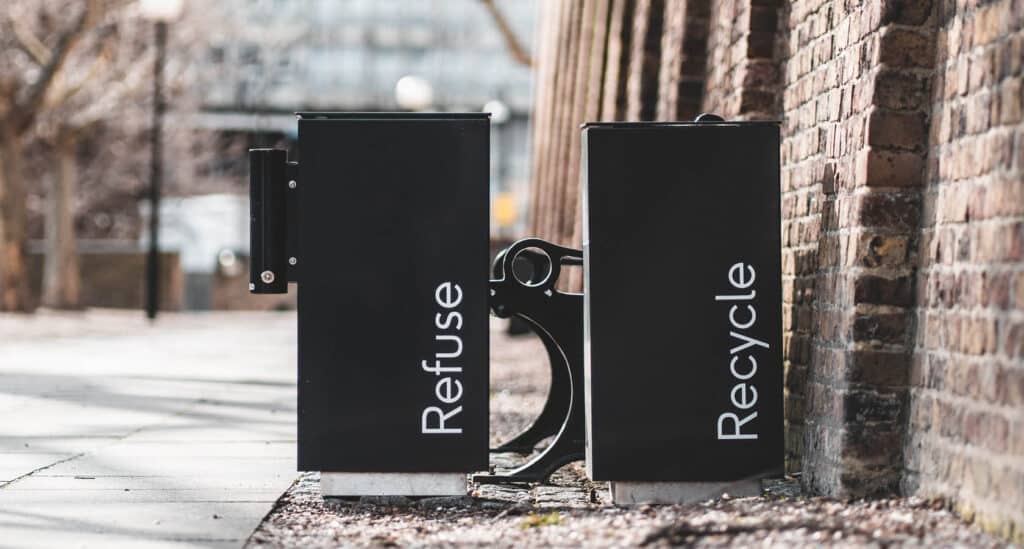Organising any event can be a daunting task and while making sure everything runs as smoothly as possible should be a priority, it’s also important to consider how we can make our events more sustainable.
Recent years have seen an increase in awareness about environmental issues, so having methods and solutions to reduce the environmental impact of our events has grown rapidly. For those of you out there who are looking for tips on planning green events, we’ve put together this comprehensive checklist with the hope that it inspires and motivates all event organisers towards reaching their sustainability goals.
What’s the Demand for Sustainable Events?
It’s clear that both attendees and sponsors are big fans of environmentally conscious events. In fact, more than 60% of those surveyed expressed their preference for sustainable practices when selecting where to spend their time and money. The outcome? A greener world of events with a happier collective!
Green is Good
With the combined pressure from sponsors and attendees driving demand for greener events, event planners now have to balance cost implications with their ethical responsibilities.
However, what many may not realise is that going green has its own financial benefits!
Careful planning can help organisers reduce both expenditure AND environmental impact – printing fewer materials, eliminating food waste where possible or selecting venues with sustainable energy sources are just some of the ways you can achieve this.
To make sure your next event ticks all these boxes, we’ve put together a comprehensive eco-friendly checklist detailing how best to minimise costs while respecting our planet.
The Green Event Checklist
1. Can you go fully Virtual or take a Hybrid approach?
A fully virtual event is the ultimate choice for planners who want a planet-friendly event. Delivered 100% online, virtual events eliminate almost all travel, printing and catering food waste. Planners can reduce costs and at the same time reach a wider audience with the potential for unlimited ticket sales.
A hybrid event is a good alternative if a face-to-face element is critical to the event’s success. Featuring a mix of virtual and in-person experiences, the hybrid event enables organisers to reduce the event’s eco-footprint by including virtual access to the event.
You can then adopt a series of sustainable measures for the in-person element.

2. Choose a sustainable event venue
3. Choose digital information
Event apps, like CrowdComms’ end-to-end platform, support paper-free event communication and information. Personalised agendas, networking, lead generation, documents and interactive maps all remove the need for printed materials.
Digital notice boards are an effective alternative to plastic signage. Reusable for many events, digital notice boards are also more dynamic and attention-grabbing than traditional printed banners and boards.
4. Recycle, Reuse, Upcycle

While physical items are unavoidable at an in-person event, (coffee is somewhat tricky to drink without a cup!) look to use recycled, upcycled and recyclable materials where possible.
Did you know a plastic water bottle can take at least 450 years to break down? While it might seem impossible to have a 100% plastic-free event, there are now some great alternatives for items traditionally made from plastic.
CrowdComms’ event badges are now available in eco-friendly reinforced recyclable paper. The paper gives the long-lasting durability of traditional pouches, minus the plastic.
Lanyards, too, are available in a range of sustainable materials such as recycled PET and bamboo fibre. The new materials have the same great print quality as their plastic counterparts but are much kinder to the environment.
For items that can be reused at a later event, keep bins by the event exit so attendees can return their badges and lanyards.
5. Opt for sustainable suppliers
Work with event suppliers to ensure their service aligns with your eco-objectives. Coffee carts that use recycled cups or support attendees who bring their own, retailers who use biodegradable packing, and caterers who use locally sourced produce are just some ways suppliers demonstrate great green credentials.
Even large, printed items such as banners and event signage can be sustainable. Ask your printers about what options they may have. Honeycomb cardboard, wood, aluminium and bamboo are all effective alternatives to plastics made from synthetic polymers.
Implementing a ‘no idle policy’ ensures delivery vehicle engines are always turned off when the driver is either sitting waiting for a period of time or away from their vehicle.
6. Make waste disposal easy

At a busy event venue, most attendees will want to dispose of their waste correctly, but they may not have time to roam the venue looking for the recycling bins.
Encourage sustainable waste disposal by having multiple clearly marked, designated bins for recycling, general and even green waste.
7. Offer green food and drink options
Work with the venue’s catering team to develop a menu that promotes sustainability and reduces waste.
Industrial meat production (particularly beef) is responsible for significant environmental damage. Producing 1kg of wheat, emits 2.5kg of greenhouse gases, while a single kilo of beef, results in 70kg of emissions.
Aim for a menu with a smaller percentage of meat-based dishes and a larger number of plant-based dishes.
Avoid over-catering (and therefore waste) by carefully estimating the amount of food required. Experienced caterers will be able to help you accurately determine food requirements based on attendee type, event activities and dietary requirements. Asking your attendees to specify their food choices ahead of time will also help with planning.
If there is food left over at the end, have a plan to work with organisations such as OzHarvest and FareShare who distribute good quality surplus food to people in need.
For beverages, have water stations available throughout the venue and encourage attendees to bring their own water bottles to refill when needed.
Finally, try and opt for reusable food and beverage service wares, or vegetable-based compostable plates, cups and cutlery.
8. Source local where you can
Whether it’s food, signage, or tech services, try and use local suppliers to reduce transport and support your local event community.
9. Make the event accessible via public transport

Reducing the number of single-car journeys not only minimises environmental damage caused by pollution and fossil fuel use, but it will also reduce congestion and make the journey to the event venue far less stressful!
Choose a venue with great access to a range of public transport options and, if possible, bicycle racks and lock-up points. Let your attendees know what transport options are available to them and provide a map with cycle routes and walking paths.
If car use is unavoidable for some attendees, promote car-pooling and offer incentives, such as discounted parking for car-poolers. If your event app offers pre-event access, set up a carpool chat channel where attendees can connect and arrange to share vehicles, which could potentially open up a great networking opportunity, too.
10. Shout about your sustainable event!
Promote your sustainable event philosophy and goals to your attendees, stakeholders, sponsors, and suppliers.
Tell people what you’re doing to make the event as Earth-friendly as possible and let them know what they can do to help, e.g. bring reusable coffee cups and water bottles, use public transport, and recycle waste.
In your post-event wrap up, highlight your sustainability successes. For example, maybe the event reduced single-car travel by 25% or kept food waste to under 5% of total catering. Tangible data will help event guests see the immediate benefits of supporting sustainable events in the future.
In Summary
We’ve looked at a few of the ways you can make your event sustainable without it being either prohibitively expensive or consuming all your time. By investing in eco-friendly suppliers, changing up materials, adopting greener practices and encouraging event-goers to take equal responsibility, your events could be ready to join the growing number of world-leading green events.
Benefitting from increased ticket sales and reduced costs could just be the start – why not begin making a real difference with these helpful and simple changes? Make sure you’re saving not just resources but money too – get creative and make great things happen!




